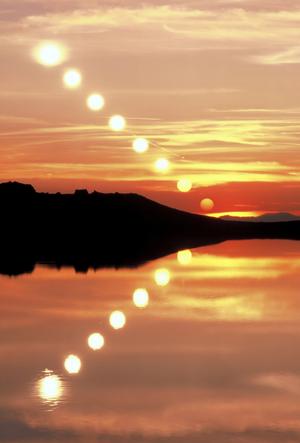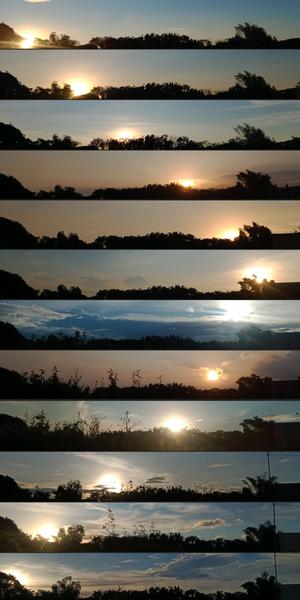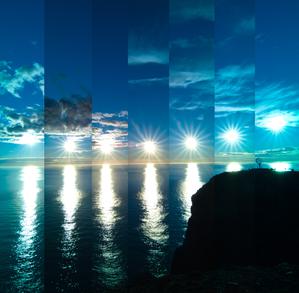Glossary term: 太阳路径(日弧)
Description: 太阳的轨迹或日弧是地球上一个固定位置的观测者所看到的太阳在天空中的视运动轨迹。每天,太阳的轨迹都会划出一道弧线,从天空东部的日出开始,到西部的日落结束。只有在春分和秋分时,太阳才会恰好从正东方升起,恰好从正西方落下。冬至时,弧线最短,在天空中的位置最低。从那时起,弧线的长度会增加,日长也会随之增加,每一个连续的弧线在天空中的高度都会高于前一天,在夏至时达到最大高度和最大日长。然后,这一过程以相反的顺序重复,在冬至时再次达到最短、最低的弧度。
在北极圈以北和南极圈以南,太阳在冬季不会长时间升起,在夏季也不会长时间落下。因此,冬季的夜晚会持续数月,夏季的白天也会持续数月。在这些极昼中,太阳在天空中绕一圈,从正午的高点移动到午夜的低点,但从未穿过地平线。
这组太阳弧线可以通过长期曝光的图像捕捉到,这种图像被称为 "日轨图"。
Related Terms:
See this term in other languages
Term and definition status: The original definition of this term in English have been approved by a research astronomer and a teacher The translation of this term and its definition is still awaiting approval
The OAE Multilingual Glossary is a project of the IAU Office of Astronomy for Education (OAE) in collaboration with the IAU Office of Astronomy Outreach (OAO). The terms and definitions were chosen, written and reviewed by a collective effort from the OAE, the OAE Centers and Nodes, the OAE National Astronomy Education Coordinators (NAECs) and other volunteers. You can find a full list of credits here. All glossary terms and their definitions are released under a Creative Commons CC BY-4.0 license and should be credited to "IAU OAE".
If you notice a factual or translation error in this glossary term or definition then please get in touch.
Related Media
白昼的最后一小时
Credit: Fabrizio Melandri/IAU OAE (CC BY 4.0)
License: CC-BY-4.0 Creative Commons 署名 4.0 国际 (CC BY 4.0) icons
每月日落的地方
Credit: John Paul Pile/IAU OAE (CC BY 4.0)
License: CC-BY-4.0 Creative Commons 署名 4.0 国际 (CC BY 4.0) icons
日食钟——极昼中的日食
Credit: Stephanie Ziyi Ye/IAU OAE (CC BY 4.0)
License: CC-BY-4.0 Creative Commons 署名 4.0 国际 (CC BY 4.0) icons
当太阳反弹时
Credit: Milos Obert/IAU OAE (CC BY 4.0)
License: CC-BY-4.0 Creative Commons 署名 4.0 国际 (CC BY 4.0) icons
太阳的轨迹
Credit: Frank Niessen/IAU OAE (CC BY 4.0)
License: CC-BY-4.0 Creative Commons 署名 4.0 国际 (CC BY 4.0) icons













